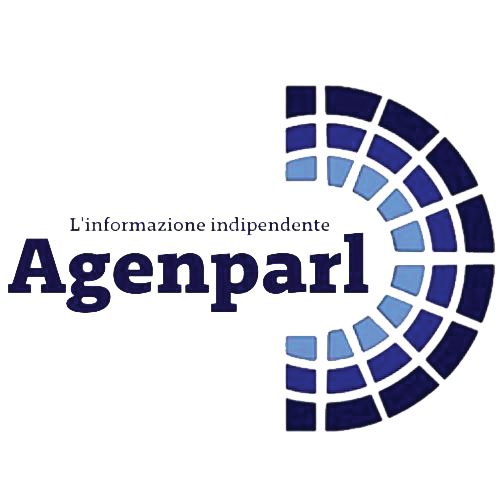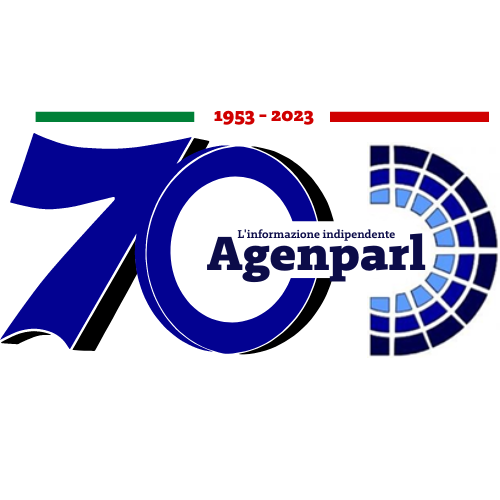 (AGENPARL) - Roma, 16 Ottobre 2025
(AGENPARL) - Roma, 16 Ottobre 2025(AGENPARL) – Thu 16 October 2025 https://whitney.us13.list-manage.com/track/click?u=387f59a72ae7b64ccae37d5c9&id=7078a09e30&e=59415c6e7e
https://whitney.us13.list-manage.com/track/click?u=387f59a72ae7b64ccae37d5c9&id=b64bc84aec&e=59415c6e7e
** ARTIST LYNN HERSHMAN LEESON TO DELIVER WALTER ANNENBERG LECTURE ON NOVEMBER 5
————————————————————
Lynn Hershman Leeson, whose work is currently on view at the Whitney in Sixties Surreal, explores the dynamics between humans and technology and will discuss her practice from the 1960s to the present in the upcoming Walter Annenberg Lecture at the Museum.
New York, NY, October 16, 2025 — The Whitney Museum of American Art announces that artist and filmmaker Lynn Hershman Leeson will present the next Walter Annenberg Lecture (https://whitney.us13.list-manage.com/track/click?u=387f59a72ae7b64ccae37d5c9&id=c1dfb1b735&e=59415c6e7e) on Wednesday, November 5, 2025, at 6:30 pm in the Museum’s Susan and John Hess Family Theater and online via Zoom (https://whitney.us13.list-manage.com/track/click?u=387f59a72ae7b64ccae37d5c9&id=d7f05ba35d&e=59415c6e7e) . Over the last five decades, Lynn Hershman Leeson has made innovative work investigating the relationship between humans and technology, identity, surveillance, and media as a tool of empowerment against censorship and political repression. A conversation between the artist and Scott Rothkopf, the Whitney’s Alice Pratt Brown Director, follows the presentation.
For this Walter Annenberg Lecture, Hershman Leeson will present a talk about her practice from the 1960s to the present. A chronic heart condition shaped her drawings of female cyborg figures, which were first exhibited in the 1966 exhibition Adventure of a Line: Drawing Experiences by Lynn Lester Hershman at Santa Barbara Museum of Art. Her drawings replace organs with machine parts and feature stamped words and other artifacts, representing proposals for a new kind of body. Her “breathing machines,” mechanical visages molded from her own face that inflate with the illusion of life and sometimes speak through recorded sound, are testaments of the roles medicine and health play in her work. She seeks a way to combine her previous explorations of the cyborg, and her increasing awareness of the sociopolitical turmoil around her, resulting in a series of sculptures representing humans’ dependency on technology to both breathe and speak. Hershman Leeson’s intersection of art and technology has
led to the creation of many ground-breaking works within media as a tool of representation and empowerment against authoritative political forces.
“Throughout her decades-long career, Hershman Leeson has shown an uncanny ability to meld personal reflections and technological explorations across mediums,” said Laura Phipps, Associate Curator at the Whitney and co-curator of current exhibition Sixties Surreal. “She has introduced a new vocabulary around sculpture, the human form, and possibilities for the future that invigorates and challenges artists today.”
“The Annenberg Lecture is an opportunity for our audiences to engage directly with living artists who are defining, challenging, and expanding culture,” said Scott Rothkopf, the Museum’s Alice Pratt Brown Director and co-curator of Sixties Surreal. “Leeson’s work is a treasured part of our collection and we are thrilled to have her back on view in our galleries and onstage.”
“Just as organic printing and DNA manipulation reshapes identities of newly manipulated organisms, so too the culture of surveillance has dynamically shifted how and what we see,” said artist Lynn Hershman Leeson.
This annual lecture is given in honor of the late Walter H. Annenberg, philanthropist, patron of the arts, and former ambassador. Past Annenberg Lecture participants include Christine Sun Kim (2025), Nancy Baker Cahill (2024), Jaune Quick-to-See Smith (2023), Dawoud Bey (2021), Julie Mehretu (2020, presented spring 2021), Jason Moran (2019), Kara Walker (2018), Catherine Opie (2017), Martha Rosler (2016), and Frank Stella (2015).
About Lynn Hershman Leeson
Lynn Hershman Leeson (b. 1941) lives and works in San Francisco, CA. Over the last five decades, Hershman Leeson has been internationally acclaimed for her art and films. One of the most influential media artists, she is widely recognized for her innovative work investigating issues that are now recognized as key to the workings of society: the relationship between humans and technology, identity, surveillance, and the use of media as a tool of empowerment against censorship and political repression. Over the last forty years she has made pioneering contributions to the fields of photography, video, film, performance, installation and interactive as well as net-based media art.
About the Exhibition – Sixties Surreal
Rather than adhering to familiar movements of the 1960s like Pop Art, Conceptualism, or Minimalism, Sixties Surreal uncovers alternate histories and recontextualizes some of the decade’s best-known figures alongside those only recently rediscovered. The exhibition considers how artists turned to Surrealism, not as a European import, but as a way to navigate the strange, turbulent realities of American life. Featuring iconic works by Diane Arbus, Yayoi Kusama, Romare Bearden, Judy Chicago, Nancy Grossman, Christina Ramberg, David Hammons, Louise Bourgeois, Jasper Johns, Fritz Scholder, Peter Saul, Marisol, Robert Crumb, Faith Ringgold, H.C. Westermann, Jack Whitten, and many others, the exhibition brings new visibility to a generation of artists who challenged mainstream narratives in pursuit of radical freedom.
Spanning painting, sculpture, photography, film, and assemblage, twenty percent of the works on view in Sixties Surreal are drawn from the Whitney’s collection. The exhibition traces how artists working in cities like Los Angeles, Chicago, Houston, and New York grappled with identity, sexuality, race, and power in ways often overlooked in canonical art histories. Influenced by, and taking permission from, the ethos of historical Surrealism—dream logic, eroticism, irrationality—these artists channeled that spirit into new and localized forms, producing work that is deeply personal and politically pointed.
From the experimental films of Jordan Belson to the biomorphic sculptures of Barbara Chase-Riboud and the visionary imagery of Jay DeFeo, the show unites diverse voices under a shared impulse to depict the world as it felt at the time, and still today—surreal.
Sixties Surreal is organized by Dan Nadel, Steven and Ann Ames Curator of Drawings and Prints; Laura Phipps, Associate Curator; Scott Rothkopf, Alice Pratt Brown Director; and Elisabeth Sussman, Curator; with Kelly Long, Senior Curatorial Assistant, and Rowan Diaz-Toth, Curatorial Project Assistant, at the Whitney Museum of American Art.
** PRESS CONTACT
————————————————————
For press materials and image requests, please visit our press site at whitney.org/press or contact:
Ashley Reese, Director of Communications
Whitney Museum of American Art
(212) 671-1846
Whitney Press Office
whitney.org/press
(212) 570-3633
** WALTER ANNENBERG LECTURE
————————————————————
In honor of the late Walter H. Annenberg—philanthropist, patron of the arts, and former ambassador—the Whitney Museum of American Art established the Walter Annenberg Annual Lecture to advance this country’s understanding of its art and culture. Support for this lecture and for public programs at the Whitney Museum is provided, in part, by GRoW @ Annenberg, and by members of the Whitney’s Education Committee.
** EXHIBITION SUPPORT
————————————————————
Sixties Surreal is sponsored by
Major support for Sixties Surreal is provided by the Barbara Haskell American Fellows Legacy Fund; The KHR McNeely Family Foundation | Kevin, Rosemary, and Hannah Rose McNeely; and the Whitney’s National Committee.
Significant support is provided by Susan Boland and Kelly Granat, and the John R. Eckel, Jr. Foundation.
Generous support is provided by Sheree and Jerry Friedman, The Keith Haring Foundation Exhibition Fund, Ashley Leeds and Christopher Harland, and the Robert Lehman Foundation.
Additional support is provided by Martin and Rebecca Eisenberg, George Freeman, Gail and Tony Ganz, and Patricia J. Villareal and Thomas S. Leatherbury.
** ABOUT THE WHITNEY
————————————————————
The Whitney Museum of American Art, founded in 1930 by the artist and philanthropist Gertrude Vanderbilt Whitney (1875–1942), houses the foremost collection of American art from the twentieth and twenty-first centuries. Mrs. Whitney, an early and ardent supporter of modern American art, nurtured groundbreaking artists when audiences were still largely preoccupied with the Old Masters. From her vision arose the Whitney Museum of American Art, which has been championing the most innovative art of the United States for ninety years. The core of the Whitney’s mission is to collect, preserve, interpret, and exhibit American art of our time and serve a wide variety of audiences in celebration of the complexity and diversity of art and culture in the United States. Through this mission and a steadfast commitment to artists, the Whitney has long been a powerful force in support of modern and contemporary art and continues to help define what is innovative and influential in American art today.
Whitney Museum Land Acknowledgment
The Whitney is located in Lenapehoking, the ancestral homeland of the Lenape. The name Manhattan comes from their word Mannahatta, meaning “island of many hills.” The Museum’s current site is close to land that was a Lenape fishing and planting site called Sapponckanikan (“tobacco field”). The Whitney acknowledges the displacement of this region’s original inhabitants and the Lenape diaspora that exists today.
As a museum of American art in a city with vital and diverse communities of Indigenous people, the Whitney recognizes the historical exclusion of Indigenous artists from its collection and program. The Museum is committed to addressing these erasures and honoring the perspectives of Indigenous artists and communities as we work for a more equitable future. To read more about the Museum’s Land Acknowledgment, visit the Museum’s website (https://whitney.us13.list-manage.com/track/click?u=387f59a72ae7b64ccae37d5c9&id=e545b55c18&e=59415c6e7e) .
** VISITOR INFORMATION
————————————————————
The Whitney Museum of American Art is located at 99 Gansevoort Street between Washington and West Streets, New York City. Public hours are Monday, Wednesday, and Thursday, 10:30 am–6 pm; Friday, 10:30 am–10 pm; and Saturday and Sunday, 10:30 am–6 pm. Closed Tuesday. Visitors twenty-five years and under and Whitney members: FREE. The Museum offers FREE admission and special programming for visitors of all ages every Friday evening from 5–10 pm and on the second Sunday of every month.
============================================================
Whitney Museum of American Art
99 Gansevoort Street New York, NY 10014
** whitney.org (https://whitney.us13.list-manage.com/track/click?u=387f59a72ae7b64ccae37d5c9&id=2498ef7b64&e=59415c6e7e)
** (https://whitney.us13.list-manage.com/track/click?u=387f59a72ae7b64ccae37d5c9&id=2845c9a32f&e=59415c6e7e)
** (https://whitney.us13.list-manage.com/track/click?u=387f59a72ae7b64ccae37d5c9&id=f52e39c895&e=59415c6e7e)
** (https://whitney.us13.list-manage.com/track/click?u=387f59a72ae7b64ccae37d5c9&id=bc5c28422f&e=59415c6e7e)
** (https://whitney.us13.list-manage.com/track/click?u=387f59a72ae7b64ccae37d5c9&id=9bedd39d6d&e=59415c6e7e)
** (https://whitney.us13.list-manage.com/track/click?u=387f59a72ae7b64ccae37d5c9&id=e836640b21&e=59415c6e7e)
Discover the Whitney’s audio guides and accessible content on ** Bloomberg Connects (https://whitney.us13.list-manage.com/track/click?u=387f59a72ae7b64ccae37d5c9&id=c5eb85542a&e=59415c6e7e)
to change the types of emails you receive from the Whitney.
this email to a friend.
from all Whitney emails.
Image credits: Lynn Hershman Leeson, Giggling Machine, Self Portrait as Blonde, 1968. wax, wig, feathers, Plexiglass, wood, sensor, and sound, 16 1/2 × 16 1/2 × 13 in. (41.9 × 41.9 × 33 cm). Promised gift to Cleveland Museum of Art, Cleveland, OH. © Lynn Hershman Leeson
